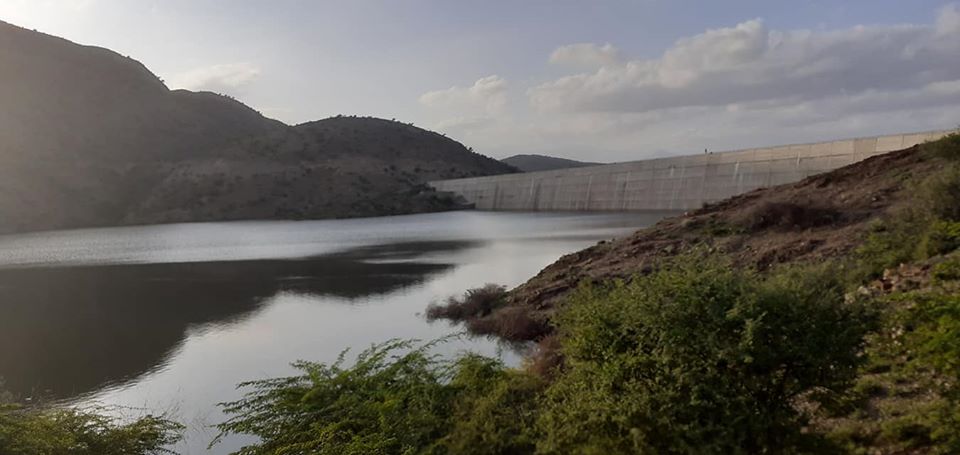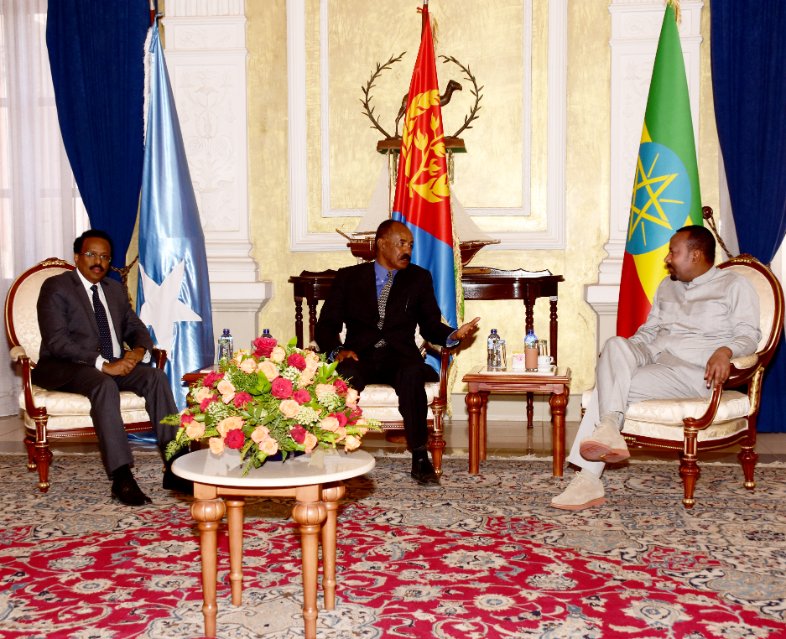Gahtelay Dam

Gahtelay was derived from the Saho word ‘Gahteley’, which means ‘water is back’.
The name refers to the unpredictable rainfall patterns in the village. A long time ago, the rainy season was not consistent; it rained and stopped raining at any time of the year. So, people in Gahtelay uttered the word ‘Gahteley’ or ‘water is back’ whenever it started raining to express their feeling of relief. The town was then named Gahtelay.
Gahtelay is a town found along the road to Massawa. The elderly of the town say that around 1968, Gahtelay was a busy trade center and some clever farmers from all over Eritrea, especially Keren, who had insights about the rich soil of Gahtelay used to grow maize, nuts, soy beans and water¬melon and profited greatly from it. In 1968 and before that Gahtelay was covered in thick sedge plants and the people of those times built their houses using those plants.
Gahtelay and other villages like Shebah, Aylet and Gomhot were destroyed by the Ethiopian army decades ago. After independence, by 1993, the fragmented people of Gahtelay started to come back to their village and it then began to grow as a village.
Gahtelay is one of the 17 administrative units in Ghindae subzone, and it is the major route to Adi Ele and Shieb to the north and Massawa and the Red Sea coast to the East. Its strategic location of being along the main road to Mas¬sawa is one of the factors that give this place so much importance. It is not only an integration point of Massawa and Asmara but also of Sahel, Anseba and Southern Red Sea regions of Eritrea.
Today, Gahtelay is home to 3,000 people, around 700 house¬holds, from three ethnic groups: Tigre, Tigrigna and Saho.
Gahtelay is bordered with Demas, lower Dengolo and Adi Shumay, and 80% of its residents are engaged in farming, herding and trade. Maize, sorghum, nut, orange and watermelon are com¬monly cultivated in that area. Due to the six hot months in the area, herders often migrate to cold areas during the hot and dry season and come back to their village when it is convenient.
The month of January is within the rainy season of Gahtelay. As a result, the area between Ghin¬dae and Gahtelay is covered with trees giving the place a refreshing green look. Not far from Gahte¬lay, there are tents of farming people and honey breeding sites. That is why there are people selling honey by the roadside. Be¬fore you can finish appreciating the scenery, you see a ‘welcome to Gahtelay’ board on the roadside. The intense daily activities of the people snatch the attention of every visitor. The construction of Demas Dam makes the wide plains of Gahtelay suitable for agriculture. Endowed with such gifts and the initiative of national reclamation activities in the town, it is doubtless that the town will soon turn to swift future development. As an outcome of all the efforts of the people and government, the wide agricultural activities are expected to provide the country with food for local consumption and export that will play a big role in developing the national economy.
Social services in Gahtelay are well provided. Gahtelay has schools ranging from kindergar¬ten to secondary school. Elementary education is taught in a mother language. For those who have not had the opportunity to go to school, Mr. Zeresenay Gaim, the administrator of Gahtelay, said, a literacy program is provided under the communal rehabilitation initiative.
There is one health station in Gahtelay that provides services to Gahtelay and Adi Shumey’s residents. The center is mainly equipped to provide maternal and child health care along with preg-nancy and delivery treatments. For emergency patients who happen to need further treatment, the station provides an ambulance.
To abolish the practice of open defecation, which is one of the Millennium Development Goals, the people of Gahtelay were able to build toilets for every household by May 2019. Water sup¬ply in Gahtelay has never been a problem because, even before the construction of the Demas dam, one km away from Gahtelay there is May Feshash, ‘Feshash water’. According to the elderly, ‘May Feshash’ is believed to be a cure to kidney problems. People in Gahtelay get sufficient clean water either through taps or from the five water dispensation points. Moreover, Mr. Zeresenay said that anyone who wants to have tap water at home can get the service.
